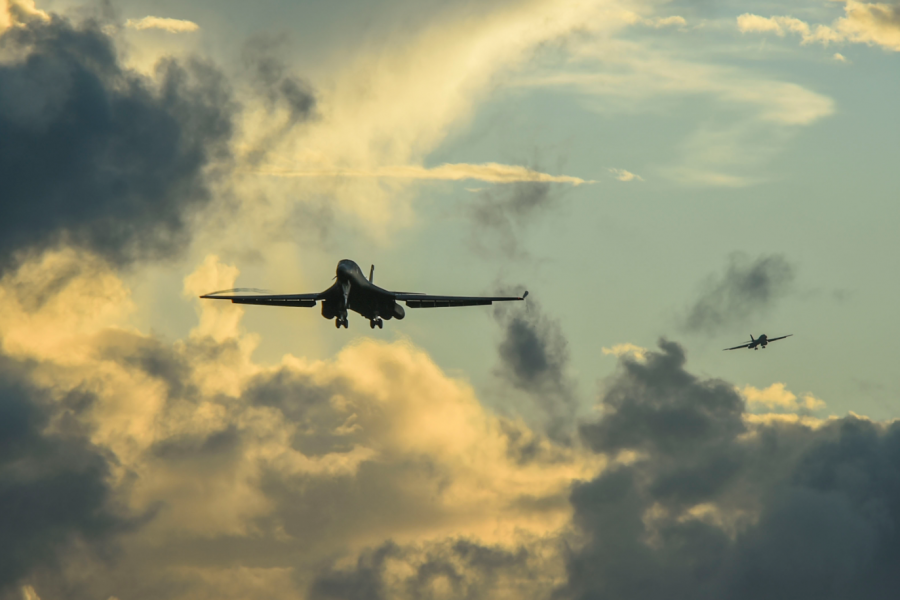About 200 Airmen and four B-1s from Dyess Air Force Base’s 9th Expeditionary Bomb Squadron began a Bomber Task Force deployment to Guam this week to back up multilateral training being hosted by Pacific Air Forces, according to a PACAF release.
The Texas-based troops and aircraft arrived at Andersen Air Force Base on Oct. 20, the release stated. This is the first BTF deployment from Dyess to Guam in approximately five months.

“Every bomber task force is important because they accomplish both tactical and strategic objectives,” said squadron commander Lt. Col. Ryan Stallsworth in the release.
BTF training operations help make USAF’s bomber force more lethal, ready, and experienced, he added.

This new deployment is all about strengthening the squadron’s agile combat employment muscles, “whether that’s working with new entities to provide our capabilities and discuss requirements needed to complete tasks or simply changing how we complete our missions to become more agile,” Squadron Project Officer Capt. David Teubl said in the release.
In response to the National Defense Strategy’s focus on “strategic capability and operational unpredictability,” USAF has changed its approach to force employment to empower bombers like the Lancer “to operate forward in” INDOPACOM from more locations around the world “with greater operational resilience,” the release noted.

Prior to their arrival at Andersen, the B-1s trained with Japan Air Self-Defense Force fighter aircraft near the Sea of Japan and integrated with a U.S. Navy amphibious assault ship in the western Pacific.
“Our ultimate strength in the Indo-Pacific is joint force lethality—our ability to train and operate as one layered, capable, and credible combat team,” said Navy Capt. Luke Frost, the ship’s commanding officer, in the release. “The Air Force plays hard. Integrated air defense and sea control operations leveraging top-shelf capabilities of both the Navy and Air Force, like this, allow us to continually field a joint force ready to fight and win.”
Two of the bombers involved in the current deployment were intercepted by Russia over the Bering Sea on Oct. 20, PACAF previously confirmed to Air Force Magazine.
